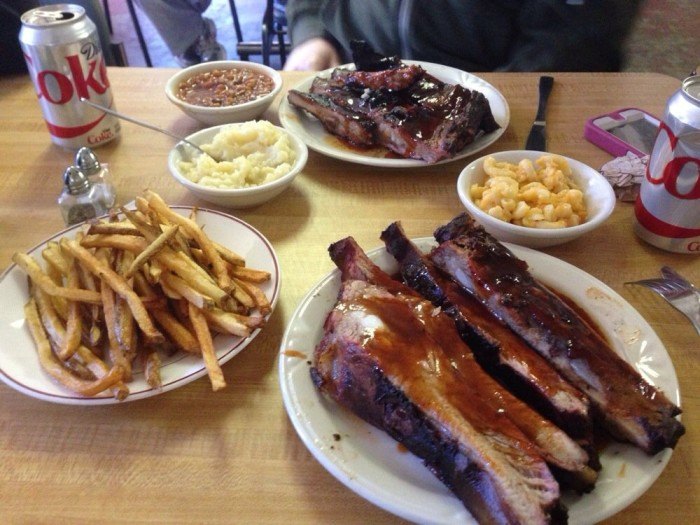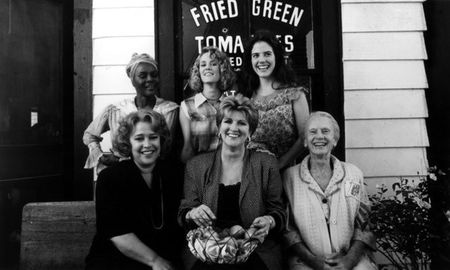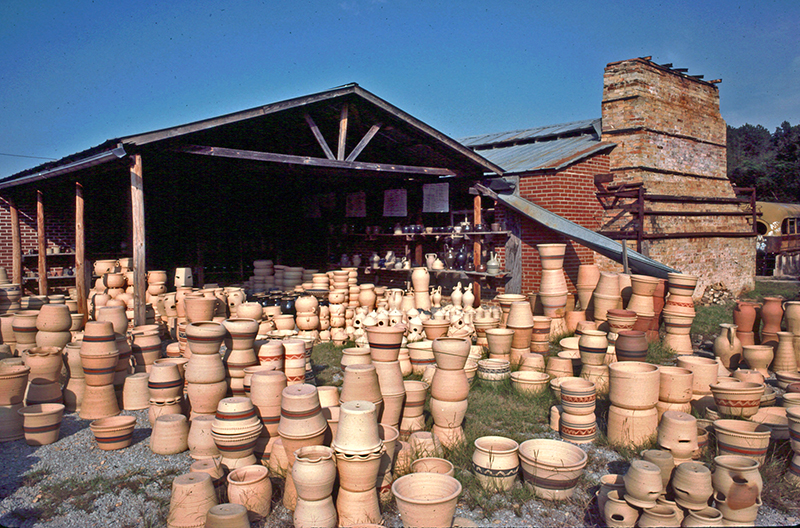Folk Pottery in Alabama Has a Very Interesting Story
Folk Pottery in Alabama has a very long and storied history, and while it is considered an art of the past, there are still some historic potteries in existence to this day.
In fact, up until the 20th century, there were literally hundreds of potters that worked throughout the entire state.
Just like civilizations throughout history, the wares made by these skilled craftsmen were needed for the basics of everyday life.
These basics included not only the serving of their food; it also included the preservation as well as the preparation of their food.
If a family in the early history of this historic state needed a chamber pot, a churn, a crock, or a storage jar, they turned to the people that made the Folk pottery in Alabama.
While most all of the items made by these early craftsmen in the state were utilitarian in nature, such as churns, chamber pots, and pitchers, others were more artistic.
In fact, some were considered to be anthropomorphic vessels, which brought an entirely different meaning to this pottery.
Anthropomorphic vessels are most often in human form, or human-like forms, while anthropomorphism is adding human-like qualities to inanimate objects or animals.
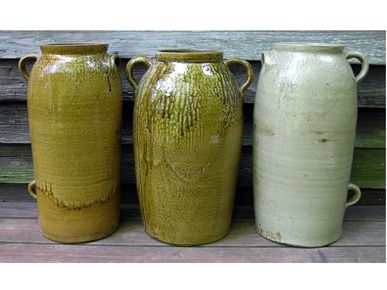 Folk Pottery
Folk PotteryThe History of Folk Pottery in Alabama
Folk Pottery in Alabama all began with the first early American colonists, which brought their traditions to this country and introduced its basic technology.
This technology included the use of the potter’s wheel, which had been used for centuries, large kilns, as well as numerous types of glazes.
In the very early stages of southern pottery-making, families would move from South Carolina to Georgia, then to Alabama or Mississippi.
From there, most of these families then moved to Texas, but several families made the decision to remain in what would become the state of Alabama.
The families that remained here would evolve to create very strong regional traditions of their own, and eventually created regional manufacturing centers for their craft.
Some of these centers of the early history of Folk Pottery in Alabama were in DeKalb County, by Sand Mountain, Rock Mills in Randolph County, and Oak Level in Cleburne County.
One of the most interesting aspects of these early pottery traditions in the state, was their dynastic nature that was created.
It became so “almost holy” in nature, that the many of these craftsmen would often marry the daughters of neighboring potters.
By doing this, they were solidifying their families own personal craft traditions for several generations.
In fact, in the early days, many of these centers would become known as “jug towns”.
To put this in more perspective, a small town at the time, Gardendale, just north of Birmingham, would be listed on local maps as “Jug Town.”
To this day, there is also a “Jug Factory Road”, in both Tuscaloosa, as well as Elmore County.
The very early potters in the state would always, with no exceptions, locate in areas where the clay was suitable for making their craft.
They would choose areas like the eastern shores of Mobile Bay, much of east-central Alabama, the Tuscaloosa area, and the northwest counties of Marion and Lamar.
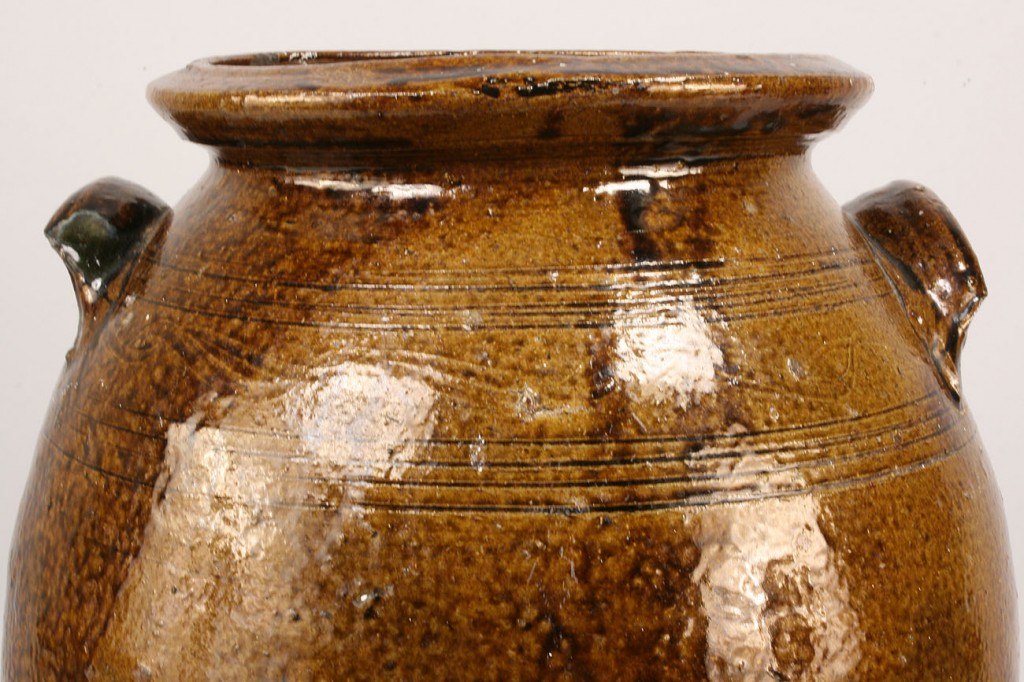 Folk Pottery
Folk PotteryThe Characteristics of Folk Pottery in Alabama
The making of stoneware very quickly became a very viable industry in several communities, and they had two major characteristics.
These two characteristics, often called traditions, included the glazing techniques.
These techniques included salt glazing, as well as alkaline glazing.
The most common technique was salt glazing and was brought to the state by immigrants from north of the Tennessee River, primarily from the Ohio Valley and Europe.
These traditions were very common before the Civil War, and first appeared in the Mobile area, as well as the northeast part of the state.
This process is done by throwing salt into a hot kiln after the pots have been loaded into it.
The salt would then vaporize, resulting in gasses that created a “glass like” coating, and also giving it a “orange peel” type texture.
However, many of these early makers of Folk Pottery in Alabama would also coat the interior of their vessels with a different glaze, for a very important reason.
The salt vapors would not reach the inside of the narrow-mouthed vessels.
The early craftsmen that immigrated from South Carolina brought a different style, that was considered to be distinctly southern; alkaline glazing.
This type of glazing was different than salt glazing, as it used lime or wood ashes to finish the product.
There were several families in the state that also made a glaze from either clay mixed with wood ashes, or lime mixed with clay or sand, or just sand.
This unique type of glaze produced a “green-to-brown” surface on the stoneware, and they also used a different type of kiln.
They introduced a rectangular kiln, also referred to as a “groundhog kiln”, which was widely used by the potters that preferred the alkaline glaze.
During the latter part of the 19th century, after the railroads became dominant, there were new types of glazes introduced.
One of these new glazes was the white feldspar glaze, also known as the Bristol Glaze, and in most all cases replaced both the salt and alkaline glazes.
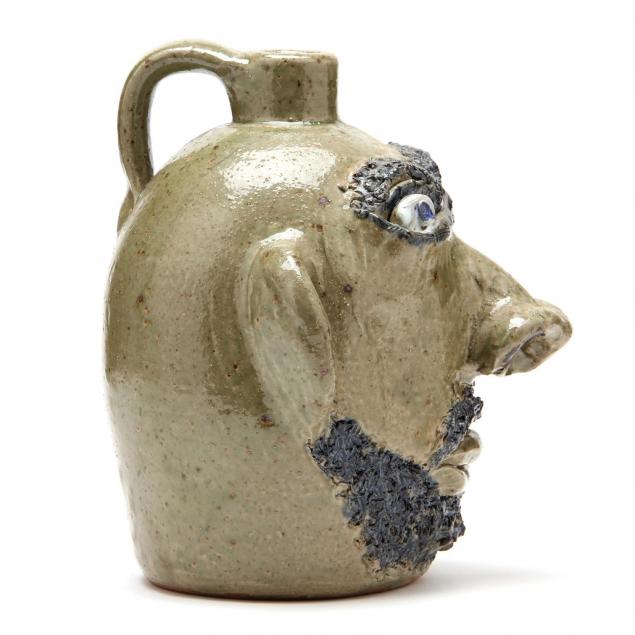 Folk Pottery In Alabama
Folk Pottery In AlabamaThe Decline of Folk Pottery in Alabama
As the technology began to change and economic factors hit after World War II, the decline of Folk Pottery in Alabama began.
The ever-growing railroad brought much cheaper stoneware from the north, and northern potters also opened in the State.
In addition, food preservation technology made several of the potters best-selling items obsolete.
Some of these items included churns, jars, as well as jugs.
However, during the latter part of the 20th century, interest peaked again for the few remaining potters.
This interest came from the urban collecting markets, which focused on pottery that reflected the folk heritage of these types of art.
This peak in interest also included several exhibitions about Folk Pottery in Alabama, as well as a documentary film about Hamilton potter Jerry Brown.
Brown became famous as he had initially priced his pottery by the gallon, which was traditional, but decided to change his pricing scheme.
He changed it to pricing by the form, with the “Face Jugs” demanding the highest prices.
The Browns as well as the Millers also begin to experiment with glaze combinations, as well as unusual forms to meet this new market demand.
Internet sales and festivals became important for both families, and they remain one of the few handfuls of potters that continue this tradition in the state.
Folk Pottery in Alabama did indeed play a major role in the heritage of this historic state, and it can still be seen being made in a few places.
References
Folk Pottery of Alabama | Encyclopedia of Alabama

Alabama Gift Store
Numerous Items for You and Your Family to Enjoy
See it here at the Gift Store
Copyright 2019-2023 Alabamabackroads.com
All Rights Reserved
